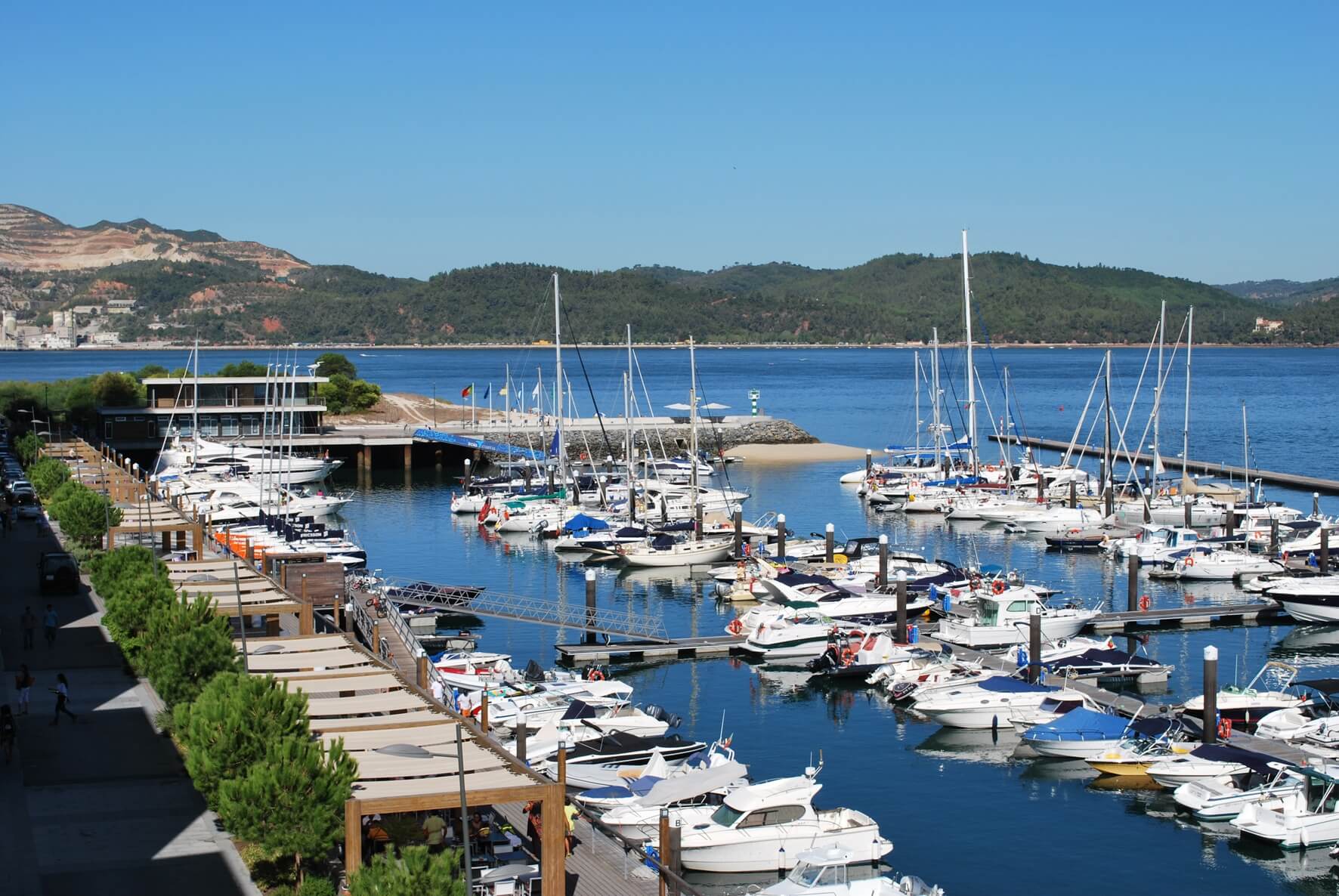Bottlenose dolphin (Tursiops truncatus)
The colony of bottlenose dolphins is composed of 28 individuals. This population is unique in Portugal, one of the very few in Europe living in estuaries.
The bottlenose dolphin is an easy species to detect: It is approximately 2 to 4 meters long, it has a grey torso and a slightly lighter belly, a pronounced snout, and weighs between 150 and 600 kg.
Bottlenose dolphins feed mainly on fish, cephalopods (cuttlefish, squid and octopus) and invertebrates. When searching for food bottlenose dolphins use their echolocation system for detecting prey.
Sexual maturity is reached at around 11 and 12 years. Gestation lasts 10 to 12 months and each female gives birth to one calf every 2 or 3 years. Dolphins live around 30 to 40 years.
- Bottlenose dolphins can be seen in the vicinity of TROIA MARINA.
- The presence of vessels can interfere with their routine – resting, feeding, socialising and reproducing – so we count on you to comply with the following rules:
- Avoid abrupt course changes.
- Be quiet when around dolphins to not attract nor disturb them.
- Do not exceed the speed at which the dolphins swim.
- Keep clear of other approaching dolphins.
- Travel in a direction parallel to the direction of the dolphins, and behind them, so that they have a clear 180º field before them.
- Place your boat at 60º behind the dolphins.
- Limit your viewing time to a recommended maximum of 30 minutes.
The following activities are forbidden:
- Chasing or separating a school of bottlenose dolphins.
- Touching the dolphins.
- Feeding the dolphins.
- Chasing after a dolphin for more than 30 minutes.
- Approaching bottlenose dolphins near the shore thus limiting their movements around the vessel.
- Reversing near the dolphins, except for an emergency.
- Swimming towards the bottlenose dolphins.
- Using jet-skis and similar craft when watching the dolphins.
- Having more than three vessels within a 100-metre radius of the dolphins.
- Move away immediately at the first sign of disturbance or agitation:
- Sudden change in the direction and speed of the bottlenose dolphins.
- Dodging and turning away from the vessel.
- Longer diving time and/or shorter surface time when approached.
- Repeated tail fin slapping.
- Adult dolphins keeping their calves away from the vessel(s) or placing themselves between the calves and the vessel(s).
We are counting on you!
If you see a wounded animal, apparently weakened or dead, or if you witness any behaviour that is clearly in breach of these rules, please report it to the maritime authorities
Marine Police – (+351) 265 548 275
TROIA MARINA – (+351) 265 499 333


